Imagine: A neighborhood café had a great menu but a confusing website with vague headings, dense text, and buried answers. The ripple effect was frustrating: low visitors, dwindling reservations, and lots of support emails. If that sounds familiar, this guide shows how to turn visitors into customers with clear, scannable pages and everything beginners need for quality website content .
Website Content: Basic Understanding
What is Website Content?

Website content consists of everything displayed on your web pages. This includes text, images, videos, and audio in various styles or formats. Website content is every on-page element shoppers consume or use to decide:
- Paragraphs on product pages and collection pages
- Visual elements such as images and videos
- Navigation labels and menu items
- FAQs and help sections
- Trust badges and social proof (e.g., reviews, security seals)
- Microcopy, including button text and small in-line prompts
Why Should You Improve Website Content?
In fact, 75% of consumers judge a company’s trustworthiness based on its website design and content, according to Sweor. If you prepare quality website content, users can quickly understand who you are, what you offer, and why they should trust you. To achieve that, your content should include a few essential elements:
- Clear, concise copy that reduces confusion and gets to the point fast.
- Strong visuals (product photos, videos, icons) that make your message easier to digest and more memorable.
- Well-placed CTAs that guide visitors toward the next step instead of leaving them stuck.
- Consistent tone and branding so every page feels like part of the same, trustworthy experience.
- Easy-to-skim structure with headings, bullets, and short paragraphs to support quick reading, especially on mobile.
Studies show that when visitors quickly find clear, relevant information, they are far less likely to bounce and more likely to return to the same site in the future. Well-structured, helpful pages encourage users to click deeper, increasing time on site and the number of pages per session.
1. If your website content is weak, friction multiplies.
Vague headlines and dense text hide value, so people leave or abandon carts. Search visibility stalls, policies confuse, and support volume climbs. Inconsistencies erode trust, and mobile users struggle to read. Progress slows because every new page becomes a one-off fix.
2. If you have quality website content , website performance improves.
Visitors grasp your offer in seconds, bounce less, and move toward action. Search engines understand your pages, lifting organic traffic. Plain-language FAQs cut support tickets and returns. Consistent voice and reusable templates speed publishing as you grow.
Types of website content
Different pages have different jobs. These types most content creators rely on and how they help you create quality website content.
5 Tips To Write Quality Website Content
Tip #1. Identify your audience
Writing for a specific group is easier than trying to appeal to everyone. To address this, many business owners create buyer personas, which are fictional characters that represent their ideal customers. Moreover, your writing progress will be more effective: you choose niche keywords, your titles speak to needs, and your content matches search intents.
To start, pick one main audience and answer a few basic questions:
- Who are they?
(Age, job, location, lifestyle: e.g., “28-year-old marketing manager in a big city.”)
- What are they trying to achieve?
(e.g., “Find a faster way to ship products,” “Get clearer skin,” “Order coffee without waiting.”)
- What problems do they have right now?
(e.g., “Slow website,” “Confusing checkout,” “Too many choices, not enough time.”)
- What words would they type into Google?
(e.g., “best moisturizer for oily skin,” “Shopify SEO app,” “coffee near me open now.”)
- Where do they usually read or hang out online?
(Google, YouTube, Instagram, TikTok, email, forums, etc.)
From these answers, write a short persona like: “Sophia, 28, busy marketing manager who needs quick, high-quality coffee and cares about sustainability.”
Case Study: SkyTab

SkyTab, a B2B company featured by MarketingSherpa, reworked its content strategy by first identifying clear buyer personas and then tailoring content to those personas. By this strategy, the company saw a 124% increase in sales leads from their quality website content.
MarketingSherpa developed their persona strategy into 5 phases:
- Phase 1: Group audience by clear use cases.
- Phase 2: Use CRM data, search/behavior data, sales feedback, and customer conversations to understand who is in each segment and how they behave.
- Phase 3: Map the key roles in a deal, find common titles and patterns, then create focused personas with: product interest, search behavior, pain points, and blockers.
- Phase 4: Create content that speaks to specific use cases and roles instead of everyone at once, so relevance and response rates go up.
- Phase 5: Use a managing editor to coordinate contributions from the team, keep content volume steady, and enforce quality standards so specialized, persona-based content remains accurate and valuable.
Tip #2. Create a brand style guide
If you’re a beginner, a simple style guide is the fastest way to make a quality website content with a consistent tone to help Google recognize your site’s expertise over time. Many companies develop brand guidelines for their written materials to align with their brand values.
You can start with these 2 pages:
- Page 1: Voice & Audience (who you’re writing for, tone words, active voice only, reading level), Format rules and Vocabulary do/don’t .
- Page 2: SEO conventions such as how to write titles/meta, internal-link rules, image alt text, snippet templates, and a SEO checklist for LCP-friendly media.
Case-study: Mailchimp
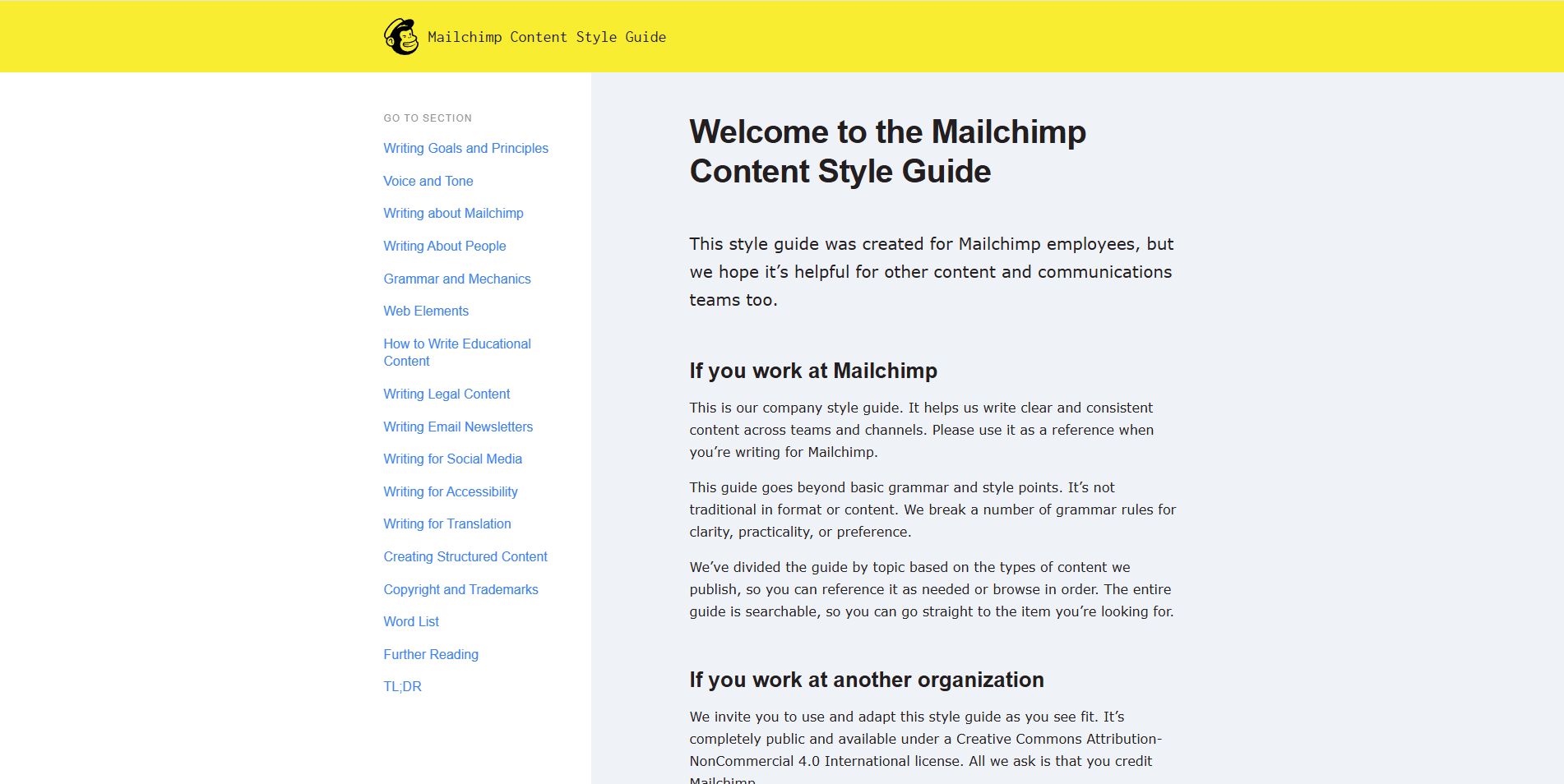
Mailchimp has established a clear, public style guide that every team uses to keep voice, tone, grammar, and terminology consistent. Because these standards are open, writers, designers, and product teams can easily adjust their content based on Mailchimp’s recommendations, then adapt those ideas to fit their own brand. The result is content that feels human and trustworthy at scale, whether it’s a landing page, release note, or in-app message.
Tip #3. Optimize for SEO
Think of SEO as a way to help the target audience find your content, not as a technical trick. In reality, good SEO is about helping search engines understand your quality website content while keeping it useful for real people. Aim to use your main keyword about 1-2% of the time (in a 500-word article, that’s roughly 5-10 mentions, not 30) to keep your text clear and avoid keyword stuffing that annoys readers and hurts SEO. Then strengthen your optimization with internal links to related content, descriptive image alt text, and a fast-loading mobile page.
If all of this sounds overwhelming, you don’t have to do everything manually. Many website owners, especially on Shopify, use SEO tools and apps to scan their store, highlight problems, and suggest or even apply fixes for them. This is often the easiest way for beginners to turn SEO problems into real improvements without touching complex code. SearchPie, one of the best all-in-one SEO solutions, can audit your site speed and HTML issues, flag on-page SEO problems, and connect you with a technical team that implements the fixes for you in a simple, hassle-free way.
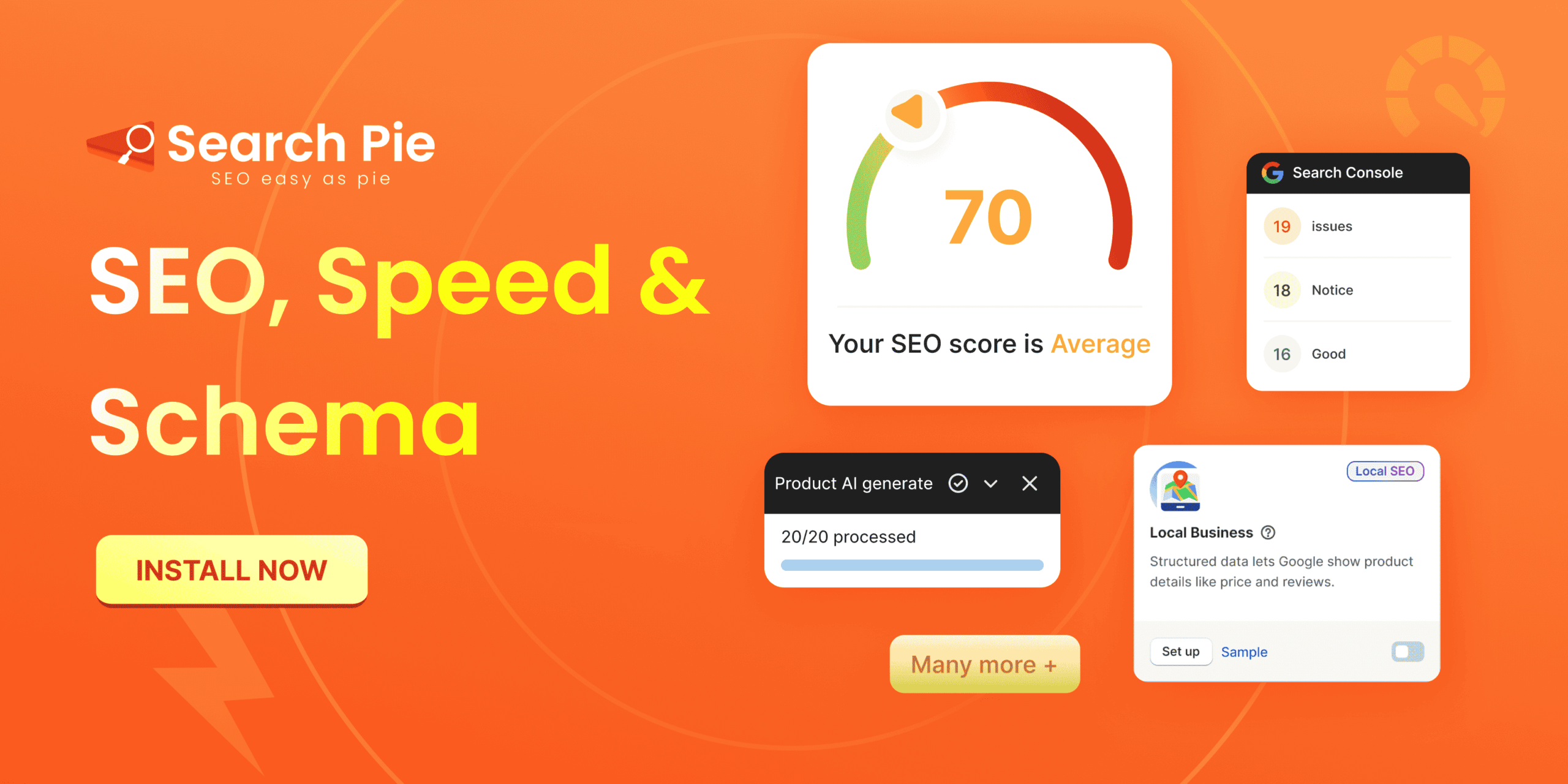
Case-study: Color Up United States
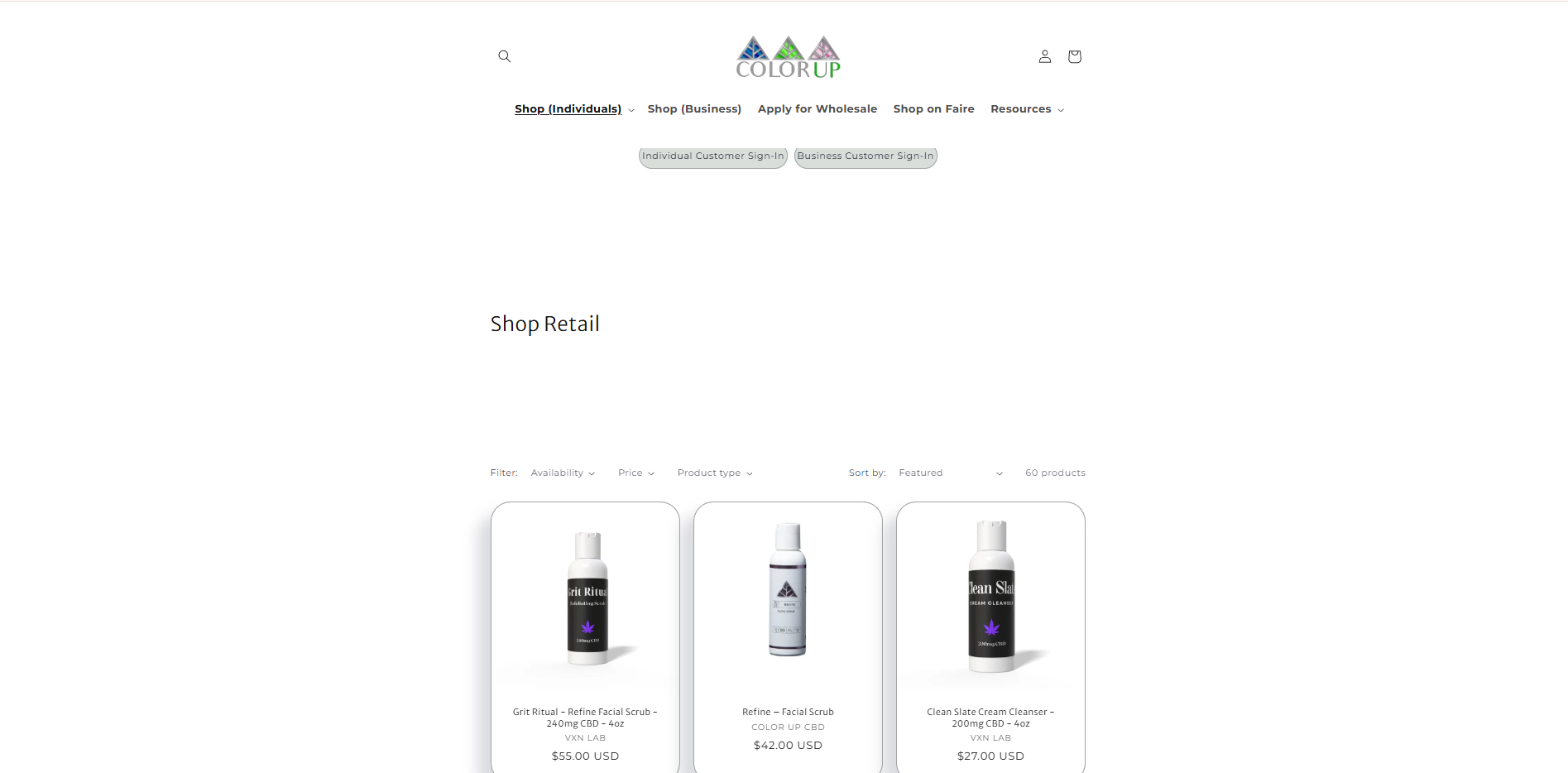
A real example of putting this into practice comes from Color Up, a Shopify store in the United States that uses the SearchPie SEO app on the Enterprise plan. Without an in-house developer, they struggled to deal with technical SEO and speed issues that were hurting how Google read their pages.
By SearchPie, the support team helped them review their store’s speed, identify HTML and on-page issues, and then actually implement fixes: cleaning up code, improving structure, and addressing performance problems. For an SEO beginner, this shows you don’t need to master every technical detail to optimize for SEO. By combining clear, keyword-focused content with a tool and team that can handle the technical side, you make it easier for Google to understand your site, give visitors a faster experience, and create better long-term conditions to improve your rankings.
Tip #4. Develop an editorial process
For SEO beginners, “just write and publish” feels easier, but it usually creates random topics, uneven quality, and inconsistent results. That’s why we suggest you prepare an editorial process to set up at the beginning, yet the payoff is much bigger in the long run. So you can move ideas from the first keyword brainstorm through drafting, reviewing, optimizing, and finally publishing and updating.
The exact process will differ by business and industry, but it often involves planning topics around reader searches. One of these processes is outlining before you write, checking on-page SEO as you edit, and scheduling updates instead of forgetting old posts.
Case-study: Canva Design School Blog
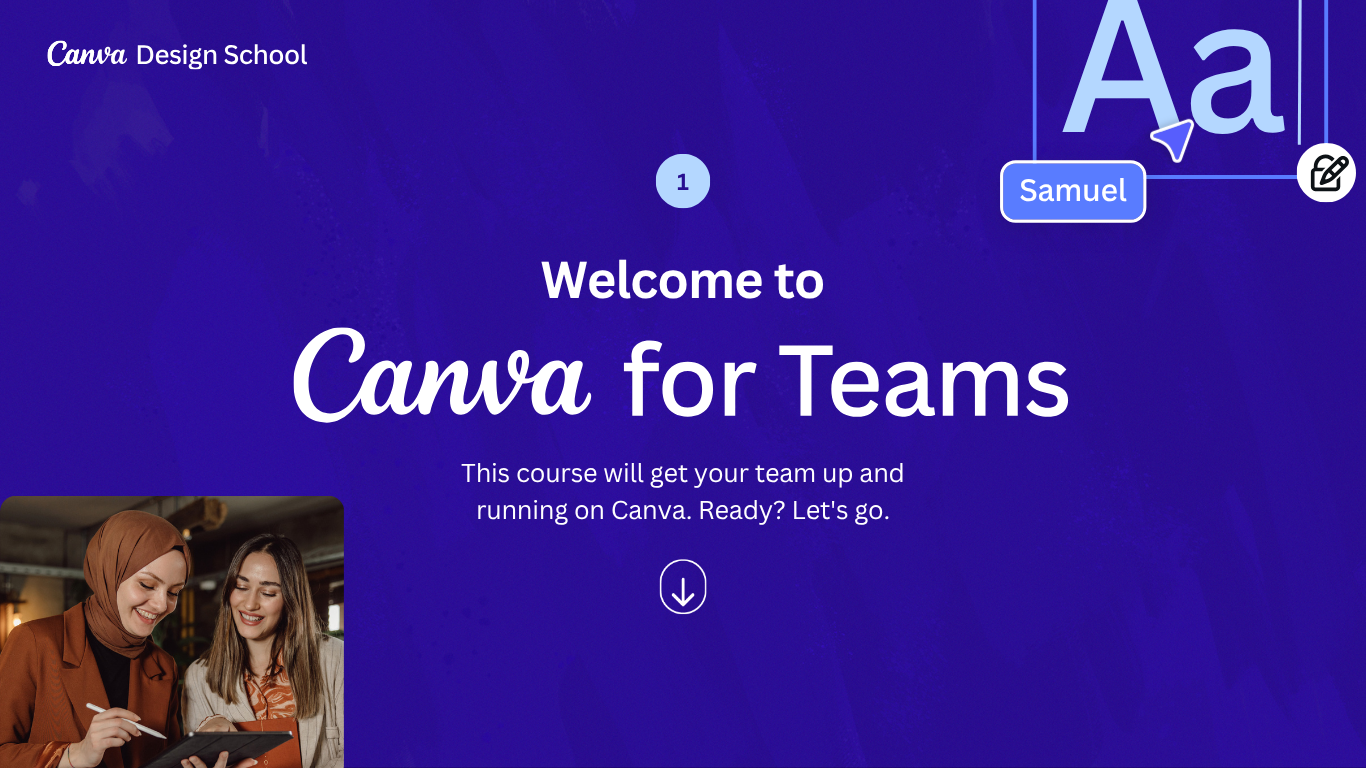
A good real-world example of an editorial process paying off comes from Canva’s Design School blog. After tightening their editorial cadence and process, Canva reports that Design School grew to over 1 million sessions in a single month, with organic search becoming the primary traffic driver, surpassing social media. Instead of simply “writing more” when growth started to slow, the team stepped back and redesigned how they planned, created, and published content. To maintain their quality website content, they committed to publishing one article every workday, kept their editorial calendar at least six weeks ahead, and introduced an editorial checklist to ensure every article met the same high quality.
Tip #5. Leverage intros and conclusions
For many SEO beginners, the middle of the article gets all the effort, while the introduction and conclusion are treated as an afterthought. That’s a mistake! To make a quality website content , your intro is where readers decide “stay or go?”, and your conclusion is where they decide “do something or just leave?”. A strong introduction quickly tells people they’re in the right place and what benefit they’ll get, instead of wasting space with long, generic openings.
Equally important, a clear conclusion tells readers what to expect next. Experts don’t end with “That’s all, thanks”; they end with one focused call to action that matches the page’s goal: “Add to Cart” for product pages, “Book a demo” for service pages, or “Read next: [related guide]” for blogs.
Case-study: BestSelf Co.

A powerful real-life example of how intros and “above-the-fold” content affect results comes from BestSelf Co., an e-commerce brand that sells productivity tools. On the product page for their flagship Self Journal, they noticed a high bounce rate: people arrived, barely scrolled, and left without buying. When CRO agency SplitBase analyzed the page using heatmaps, polls, and surveys, they found a simple issue: Visitors didn’t clearly understand the main benefit of the product or why they should trust it, especially in the very first screen they saw.
Their hypothesis was to improve the intro section by adding a clear, benefit-driven headline and social proof above the fold. They tested two new headline variants, like “Join 172,783+ professionals who achieved their goals by using the Self Journal”, against the original version, which had no proper headline at all in that area. Over four weeks, with about 20,000 visitors per variant, the winning version increased conversions by 27% and add-to-cart rate by 13%.
Conclusion
Creating quality website content isn’t as complex as it looks. You don’t need tricks, you just need to care more about your audience than your word count. Understanding who they are, answering their real questions, and making your pages easy and fast to use are your core missions. Keep these tips close as a simple checklist you can return to whenever you create new content. And if you’d like more practical, beginner-friendly SEO advice, stay tuned and follow along for future guides and tips.







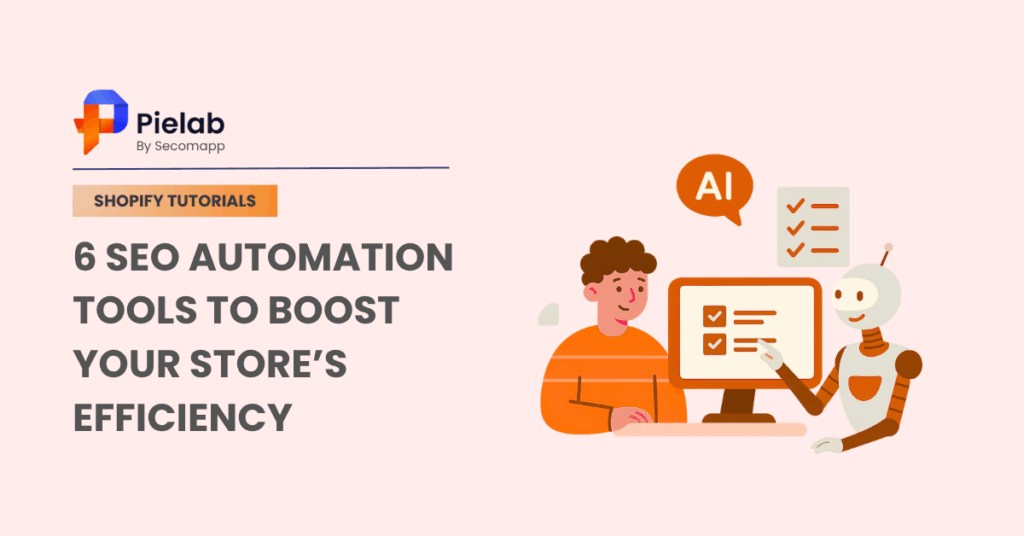







Pingback: B2B vs. B2C Marketing: The Impact of Artificial Intelligence – Busines NewsWire